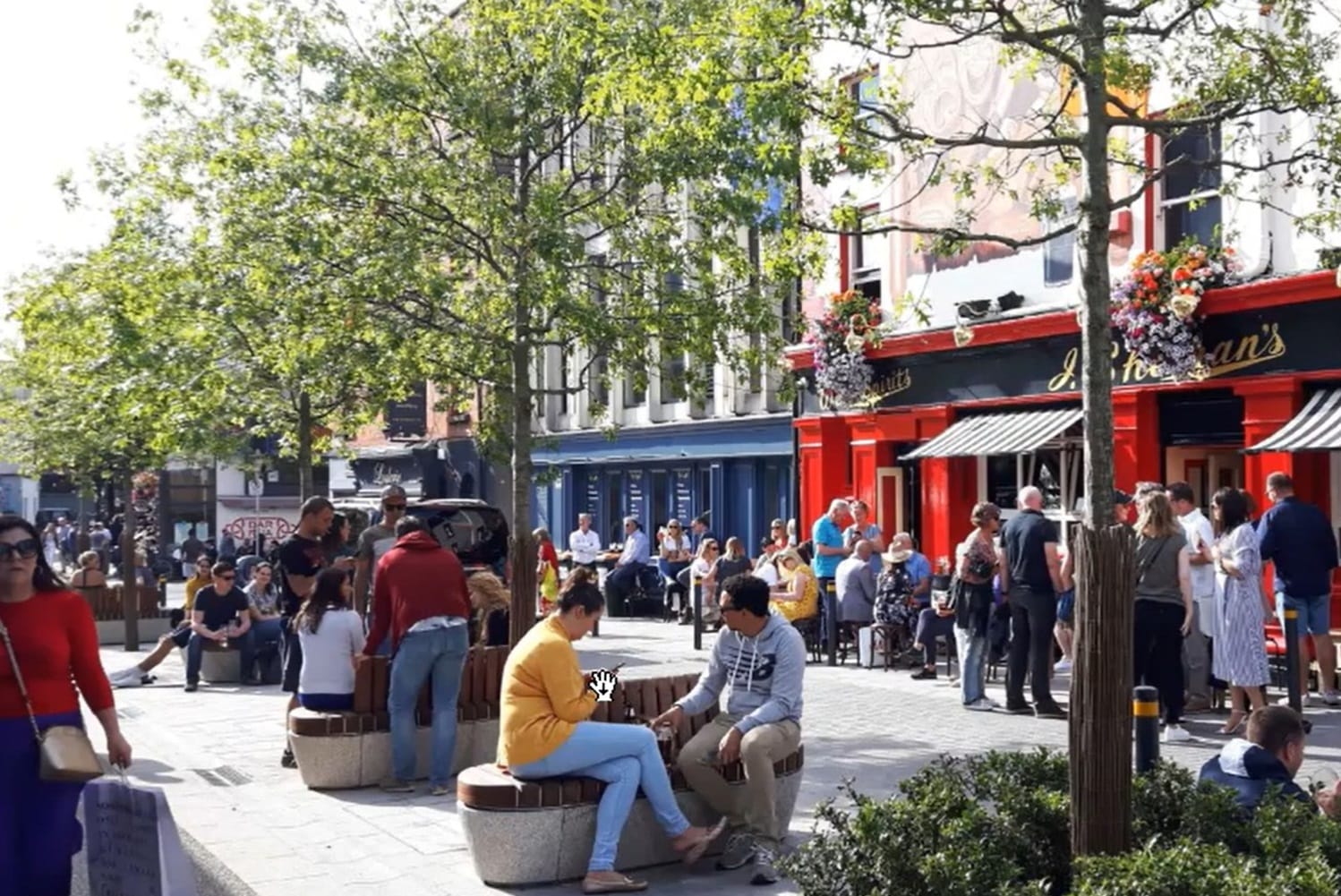What’s the best way to tell area residents about plans for a new asylum shelter nearby?
The government should tell communities directly about plans for new asylum shelters, some activists and politicians say.
“We are running out of quick wins,” said landscape architect Peter Leonard, at a recent meeting. “It’s becoming increasingly complex.”

Dublin City Council is pushing ahead with plans to plant more trees and add greenery to the city centre – but it faces increased challenges, said Peter Leonard, a council landscape architect, at a meeting of the planning committee on Tuesday.
Compared to many cities, Dublin has poor tree cover, Leonard said. The area between the canals “is still the most unnatural environment that there is on this island”, he said.
Trees brighten neighbourhoods, clean the air and tamp down flood risks. “There is growing evidence of the ability of green infrastructure to improve the health of people who live in urban areas,” he said.
Since the council started its greening in 2016, it has added 16,800sqm of public green space and 1,300 trees across the city, said Leonard.
But momentum is slowing, said Leonard. “We are running out of quick wins,” he said. “It’s becoming increasingly complex.”
Among the challenges are electrical and plumbing connections under the roads, and resistance from residents who don’t see a need for greater biodiversity, he said.
Councillors at the meeting welcomed the work done so far. And Social Democrats Councillor Patricia Roe asked whether the parks department has a plan for Smithfield.
“Smithfield is one that we are actually looking at currently,” said Leonard. He said he hopes the council will have a draft greening plan for that area in the next few months.
In 2015, Dublin City Council calculated that the Liberties area had the greatest deficit of green open space in the city, said Leonard.
It launched a greening strategy for the Liberties in 2016, planting trees and other greenery, refurbishing historic parks and opening two new ones: Weaver Park on Cork Street and Bridgefoot Street Park.
After that, the council rolled out more greening programmes – in Stoneybatter, the north east inner-city, and the markets area. It recently produced a draft greening strategy for the Whitefriar area too.
So far, greening projects delivered 150 percent more public green space in the Liberties, said Leonard. It planted 600 new trees in the north east-inner city – a 60 percent increase, he said.
There are also now 41 greening projects underway in Stoneybatter, based on ideas pulled together with the local community, Leonard said.
The citywide greening strategy includes refurbishing historic parks too, including St Audeon’s Park in the Liberties, Diamond Park in the north inner-city and Wolfe Tone Park.
“All these projects really should improve the look and feel of the public realm,” Leonard says, showing before and after pictures of Chatham Street just off Grafton Street.

Chatham Street was drab before, he said. Adding trees and plantings transformed it, said Leonard, and the council added natural drainage too.
“We also use a lot of pilots and prototypes to learn as much as we can,” he said. They collaborate with University College Dublin, where researchers are looking at the impact of trees on urban areas.
Areas where there was space that the council could depave and replant were easy wins, says Leonard, and he points to photos of works underway in traffic mediums on High Street and Nicholas Street.
“We very simply went in and depaved a lot of these areas and we planted with a mixture of herbaceous perennials and they dramatically improved the aesthetic quality on these streets,” he said.
A before and after slide shows the difference greening made to a strip of Marrowbone Lane in Pimlico.
Now though, they’re into the more challenging projects, he said.
Space is tight under the city streets, he said, and utility lines can make it hard to fit anything else in. “There is so much competition for space.”
Also, some people just don’t want their area greened, said Leonard. “We are now coming up against stakeholders, more regularly, who don’t agree with what we are trying to do.”
The council received one comment during a consultation that said that the bees could go somewhere else, he said.
Ultimately, Dublin City Council would like to have reached the whole of the city centre and then move on to elsewhere in the city, he said.
Robbie Sinnott, the coordinator of Voice of Vision Impairment, said there hadn’t been sufficient consultation with disabled people’s organisations, despite a commitment to that in the city development plan.
Leonard said the council’s parks department has begun to do that, and consulted with Voice of Vision Impairment on the two most recent greening projects.
Said Green Party Councillor Janet Horner: “Fair play to all of your staff who are over the greening projects. They have always displayed great patience in explaining the benefit for the area.”
Right to Change Councillor Sophie Nicoullaud, who chairs the planning committee, said that the Liberties area is losing mature trees because of construction projects.
Dublin City Council should not allow a developer to cut down trees on public land, she said. “We need to protect what we have.”
Leonard said it is possible that the developer is allowed to cut down trees because they are unhealthy, otherwise a tree protection plan should be in place as part of the planning permission.
Get our latest headlines in one of them, and recommendations for things to do in Dublin in the other.